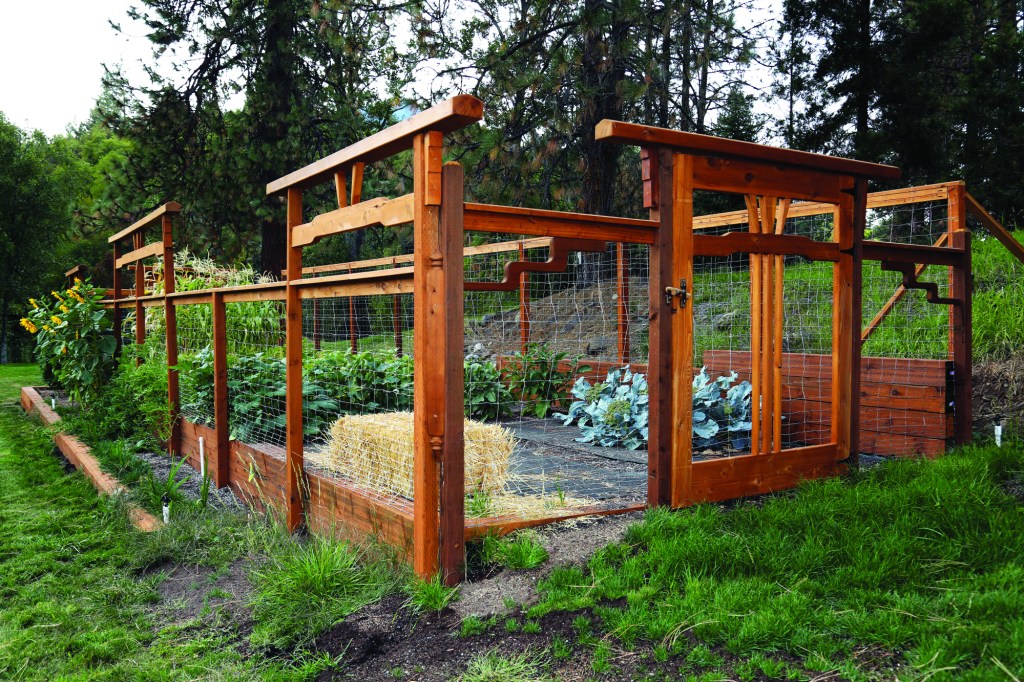With all of his Roadshow dates and trade show appearances (see Training the Trades), Gary Katz is a very busy man. When it’s time to chill, Katz returns to his home in the woods of Oregon. But he isn’t one to kick back and watch the tube. Instead, he has used his spare time to build a large workshop and to methodically rebuild his house.
If that doesn’t seem like much, this year Katz decided to get his hands dirty in a different way—he put in a garden. Not your basic little backyard plot, Katz’s garden is 16 feet by 50 feet. And while most of us would be content to enclose it with some chicken wire strung between PT posts, Katz isn’t one to pass up the chance to use the knowledge and skills he has gleaned over his years as a carpenter and historian, even though his only audience for this work is a crop of vegetables happily growing in the rich soil.

Katz used framed openings spanned with cloud-lift beams that he'd seen at the Gamble House in Pasadena. The three vertical elements in the middle of the beam are supposed to represent the suns rays and "waterfall brackets" support the top beam that is beveled to shed water.
Green (or Greene and Greene) building. On the downhill side of the garden, Katz extended six of the posts above the fence line to create three framed “openings.” Borrowing from a pattern he’d seen at the Gamble House, in Pasadena, Calif.—a house designed by Charles and Henry Greene that many consider to be the finest example of American Arts and Crafts architecture—Katz incorporated three-step “cloud-lift” beams between each pair of posts. He topped the openings with lintel beams that extend a foot beyond the posts. The tops of the lintels are beveled slightly to shed water.
Sun rays and waterfalls. Three angled “sun rays” connect the cloud-lift beams and the lintels, a design Katz had seen on a screen door at the Gamble House. These are supposed to represent the sun’s rays piercing through the tops of the clouds.
Also inspired by Greene and Greene are the stepped brackets that support the lintels. Katz calls them “waterfall brackets,” adapting a term he’d seen in a Darrell Peart book on using Greene and Greene architectural motifs in furniture.

Zig-zag lightning bolt brackets adorn the fence panels on both sides of the gate. Note the hand-crafted gate latch as well as the stand of corn towering over the back gate.
Lightning bolts and cloud-lift gates. The garden is accessed by gates at either end. Continuing the theme that Katz introduced with the fence structures, each gate features a cloud-lift beam with sun rays and is hung in a frame with the same lintel and waterfall-bracket details. Flanking the gates on both sides are “lightning bolt” brackets (3), an idea borrowed from Greene and Greene’s Thorsen House, in Berkeley, Calif. Katz made all the decorative elements in the garden from tight-knot western red cedar and sealed everything with Sikkens cedar-colored exterior stain.
Katz has no immediate plans to start ThisIsGardening.com as a companion publication to his current online magazine, ThisIsCarpentry.com, but if you visit at the right time of year, he might be willing to share his “Greenes” with you.
Photos by Gary Katz.
